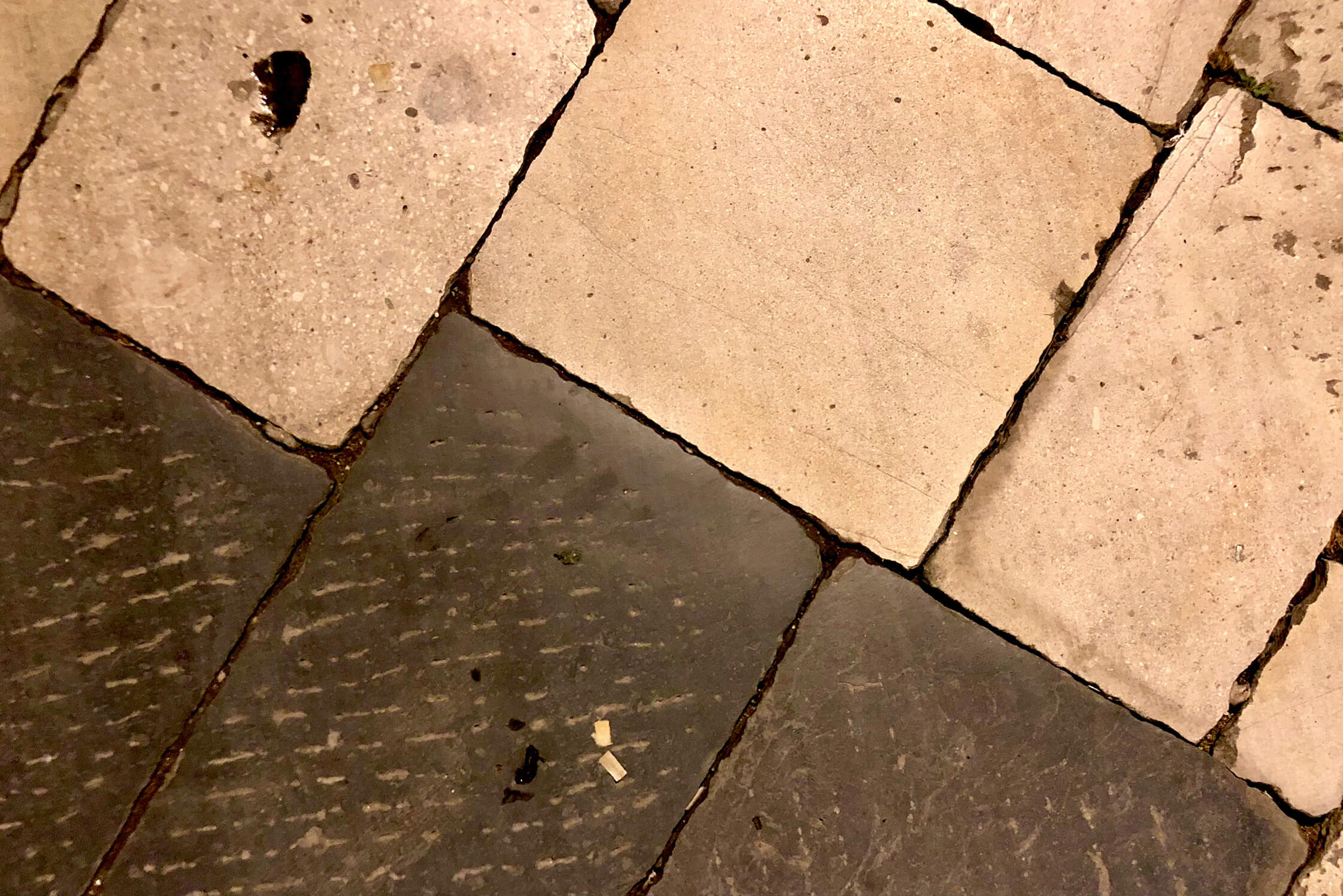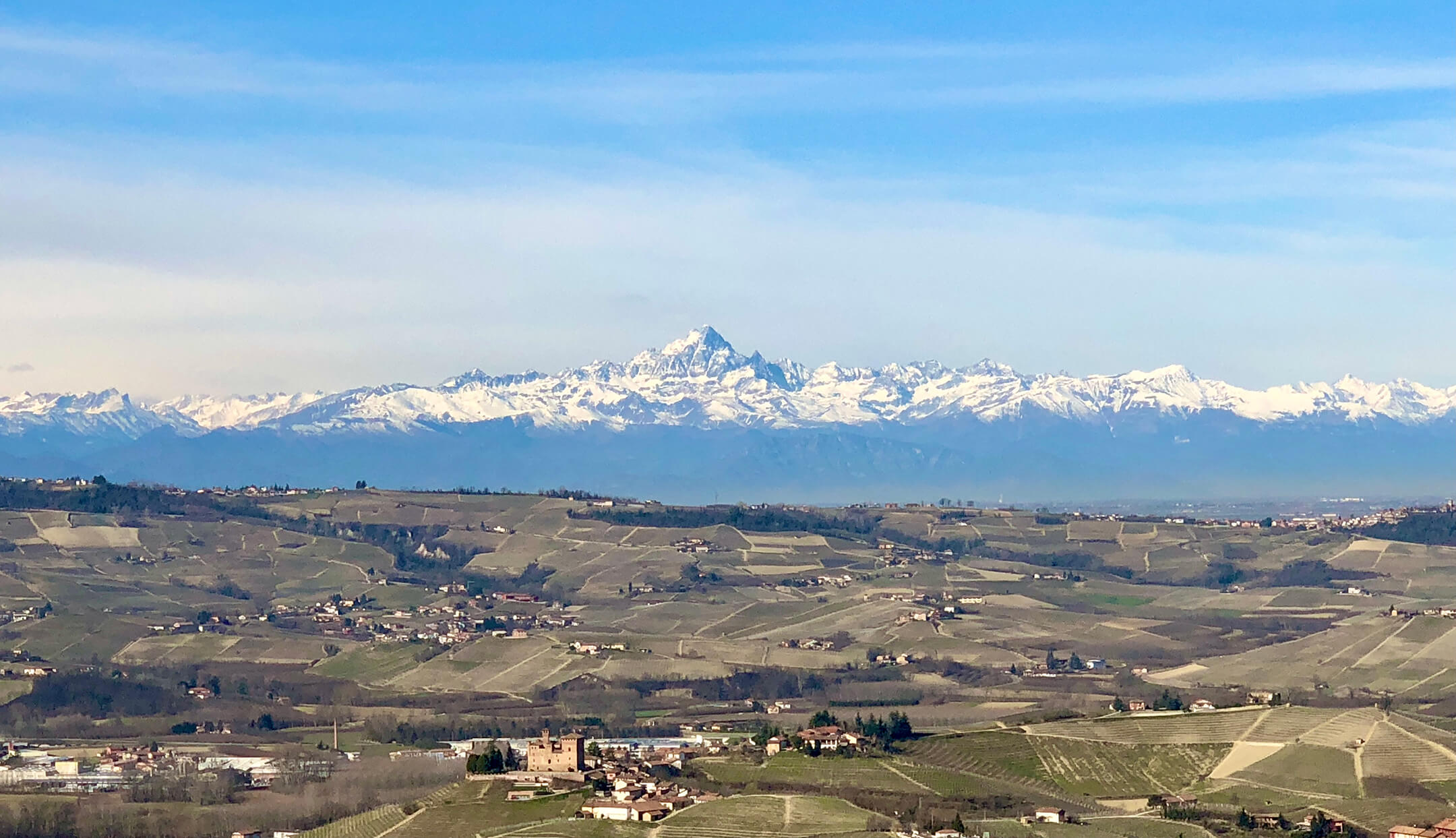
I’ve finally returned for a couple-month stay in California and was greeted yesterday by a torrential downpour that the state has desperately needed. Meanwhile, the wine industry freight woes continue with the constant touch-and-go challenge of extensive delays. I waited until the last moment to write this newsletter until I got the go ahead from my sister Victoria, our company office manager, to let you know that a container from Italy is finally landing after more than two months of holdups. It’s filled with some exciting new releases from some of our favorites in Piemonte. There isn’t a lot arriving for a typical November, however some Burgundies may also arrive from David Duband (Côte de Nuits), Rodolphe Demougeot (Côte de Beaune), and Domaine Chardigny (Beaujolais and Mâconnais), as well as some from Germany’s latest cult wine producer, Wasenhaus, and Katarina Wechsler, a young producer out of Germany’s Rheinhessen who has fabulous Riesling vineyard holdings, including Kirchspiel and Morstein.
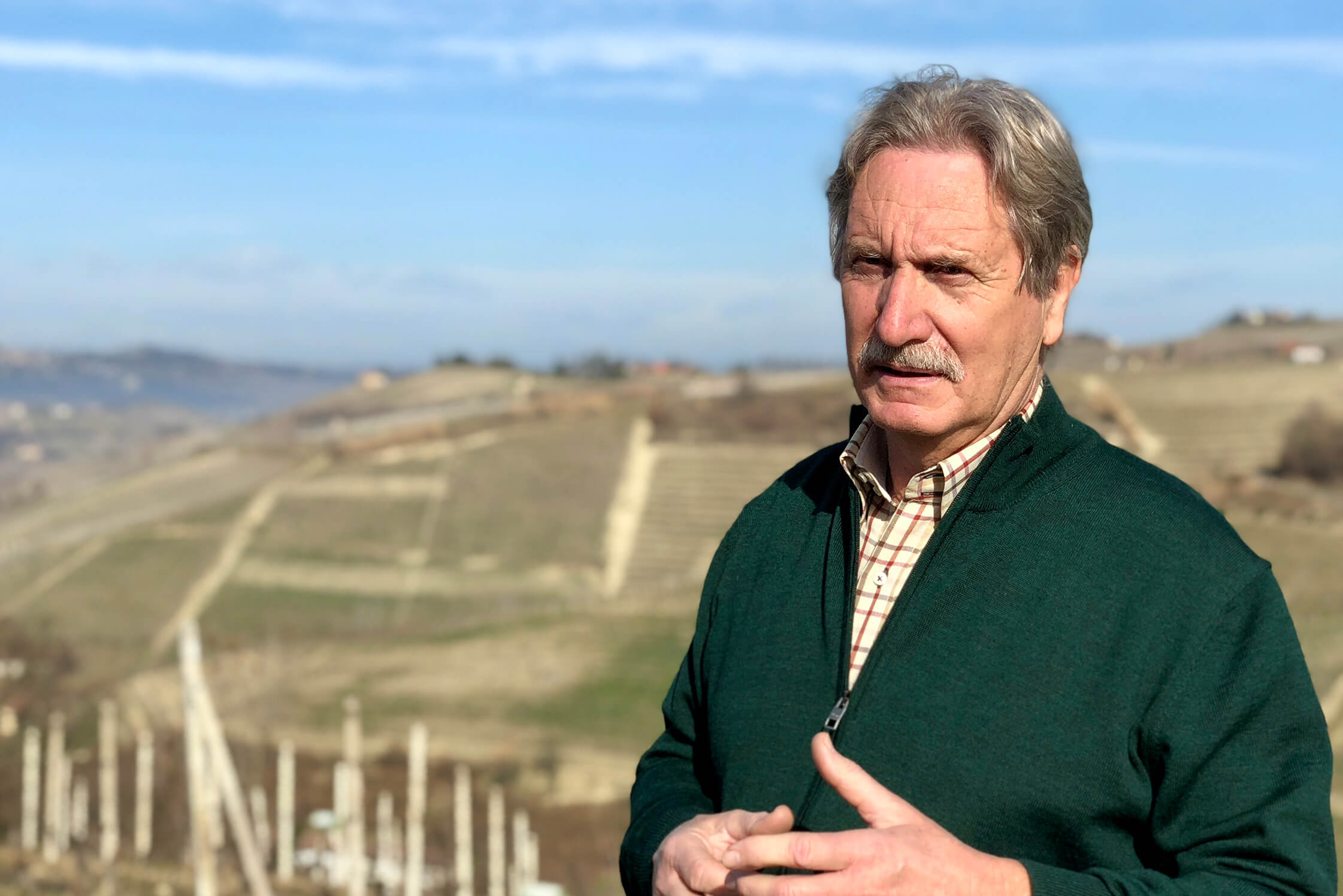
I doubt there’s another importer worldwide that beats the drum of Poderi Colla louder than we do. We just can’t seem to get enough of them. And it’s partly due to the fact that during the many changes in trend over the last few decades, the Colla family has stayed the course on the traditional approach since the late 1950s, when Beppe Colla owned Prunotto until the early 1990s. Once Prunotto was sold to Antinori, the Collas put all their money into only a few specific estates that Beppe and his brother Tino thought were as good as it gets in the area: Barolo’s Dardi le Rose, Barbaresco’s Tenuta Roncaglie, and Cascina Drago, a high altitude estate just across the road from Barbaresco-classified vineyards where they produce their Nebbiolo d’Alba and Bricco del Drago Dolcetto-based wine, along with other atypical higher-acid varieties that thrive best in cooler climates, like their sparkling wine made from Pinot Noir, a Pinot Noir still wine, and a dry Riesling. We’re fans of everything they make, but as one may expect, our focus is on their traditional local varieties.
Aside from a restock on the fabulous and underrated 2017 Barolo and Barbaresco (which are now being reassessed by some critics in a more positive light), the single most exciting new Colla wine on this container is Colla’s 2019 Nebbiolo d’Alba. The reviews of the finished bottlings of 2016 Barolos and Barbarescos started coming out about the time that the producers were harvesting a vintage that appeared to be one of the most important in recent decades: 2019. While discussing the 2016 vintage in Piemonte at the start of the pandemic in Italy during a visit to the Collas (among about a dozen other top estates visits in Barolo and Barbaresco) in February of 2019, Tino Colla (pictured here), who has seen more than fifty harvests as an adult, basically skipped over 2016 and jumped right into the merits of 2019, a vintage he felt would be one of the most important of his lifetime. Their Nebbiolo d’Alba is a preview of that oncoming quality, and it’s gorgeous. Colla nails it every year with this wine, but 2019 is a little different. As always, it’s made just as a Barbaresco would be with one year in old botte to soften the edges while preserving its delicate aromas, but the 2019 Nebbiolo d’Alba is notably more suave and with profound depth for this classification of wine. Aside from the balance of the vintage itself, the high altitude of this vineyard—370m on average—imparts vibrating tension and snappy-to-the-tooth fresh fruit. During the last three years that I’ve lived in Europe, I’ve had the opportunity to taste many wines from different producers before they reached the states. (Of course, I’ve tasted a lot of others we don’t import, as well.) The quality demonstrated in this broad sampling of 2019 Nebbiolo wines from great producers is convincing enough to suggest that you should buy as much as you can, not only from us but from everyone who’s selling them. All of the best examples will improve in bottle for a long time, despite this classification’s less reliable reputation for doing so, compared to Barolo and Barbaresco. Look out for the great Nebbiolo vineyard sites outside of the limits of Barolo and Barbaresco that can only be labeled as Nebbiolo d’Alba, instead of the declassified young-vine Barolo and Barbaresco fruit bottled as Langhe Nebbiolo. In Nebbiolo d’Alba vineyards there are characteristics imparted by old vines, which, in Barolo and Barbaresco appellation vineyards are all reserved for their top bottlings. If Nebbiolo is one of your passions and you need a price break without sacrificing quality, go deep on 2019 entry-level Nebbiolos.
Barbera always needs more heat than Nebbiolo to reach its peak. This may not be music to the ears for those in search of lower-alcohol wines but with the top producers exceptions can be made. While visiting Giacomo Conterno in 2019, perhaps the most unexpected and mind-bending wine in the bunch was the 2017 Cascina Francia Barbera, out of large oak cask. The layers of depth were simply extraordinary, and our entire group walked away from that visit with a newfound respect for big-hitter Barbera, even with its high alcohol well over 15%! (The reality is that many Barolo and Barbaresco are labeled 14%, but are well over 15% nowadays with the continued increase in solar power each year.)
Almost every vintage in the last twenty-five years (save a few, like 2002 and 2014) has brought greater credibility to Barbera as a world class variety, and 2019 has kicked it up a couple notches. It was a long growing season with steady weather all the way through, and despite the lack of extremely high temperatures in the previous two vintages, it ripened perfectly, and its naturally high acidity relaxed just enough to bring its stockpile of complexities into balance in this slow growing season. What’s more is that Colla’s Barbera d’Alba “Costa Bruna” is sourced entirely from the Barbaresco cru, Roncaglie, on what would typically be a Nebbiolo exposition facing south, and with very old vines with most of them planted in the 1930s. It offers a diverse combination of fruits, from bright red to dark, with sweet red and purple flowers and spice. It’s absolutely another Colla wine to pepper into your annual wine schedule.
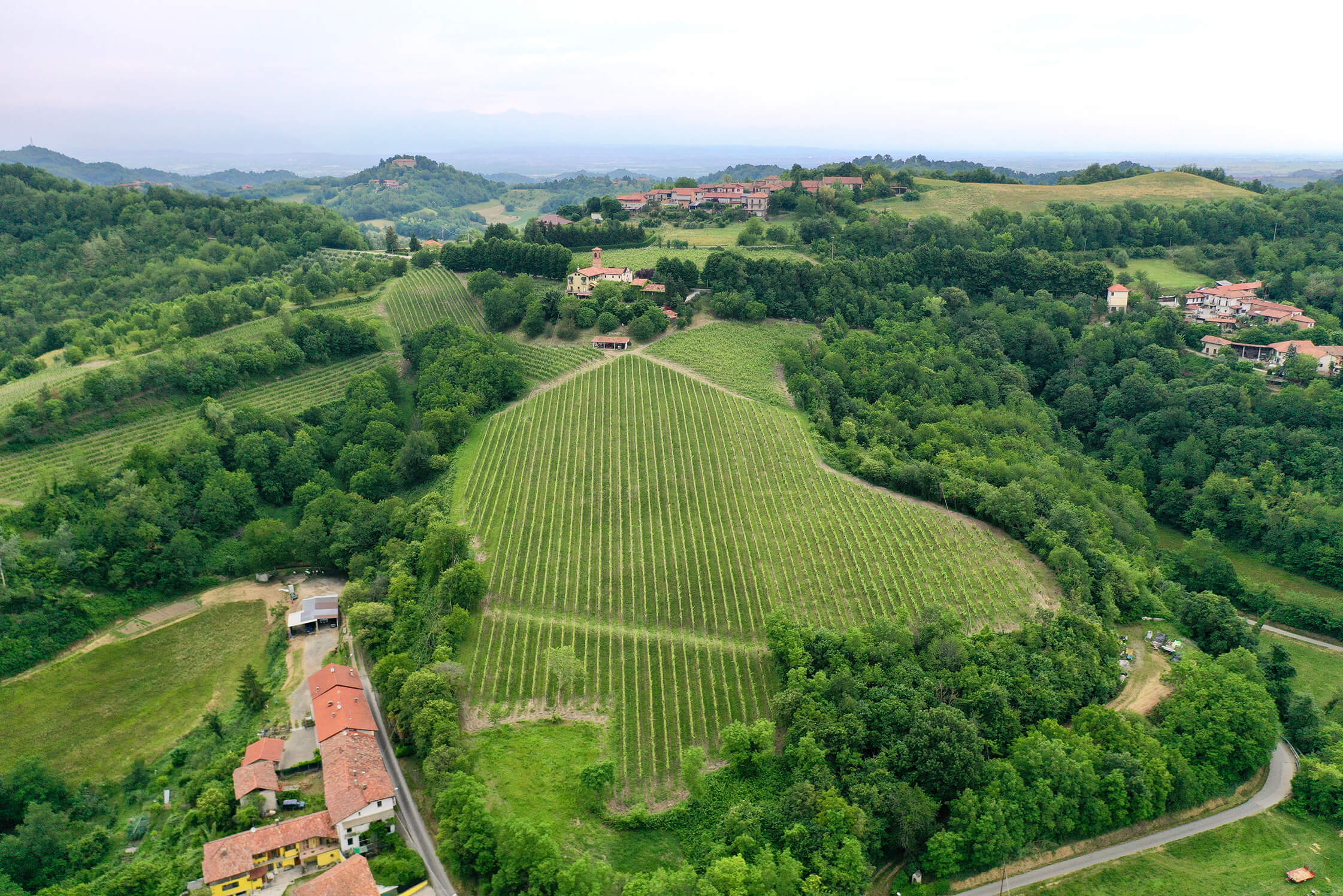
Just north of the Collas is the Russo family, who are also extremely big fans of the Colla’s wines. Their wines are labeled under Crotin, the Piemontese dialect name for small cellars under the main cellar, used for keeping the best wines for long-term aging. The Russos have been churning out some of the top values in all Piemonte now for nearly a decade, under the assistance of the well-known prodigy enologist, Cristiano Garella. Their organically farmed vineyards are in some of the coldest growing sections of southern Piemonte. Here, the frigid temperatures offer grapes a long growing season, ideal for the high-toned aromatic Piemontese varieties. In these parts it’s all about punching power inside of this lightweight division.
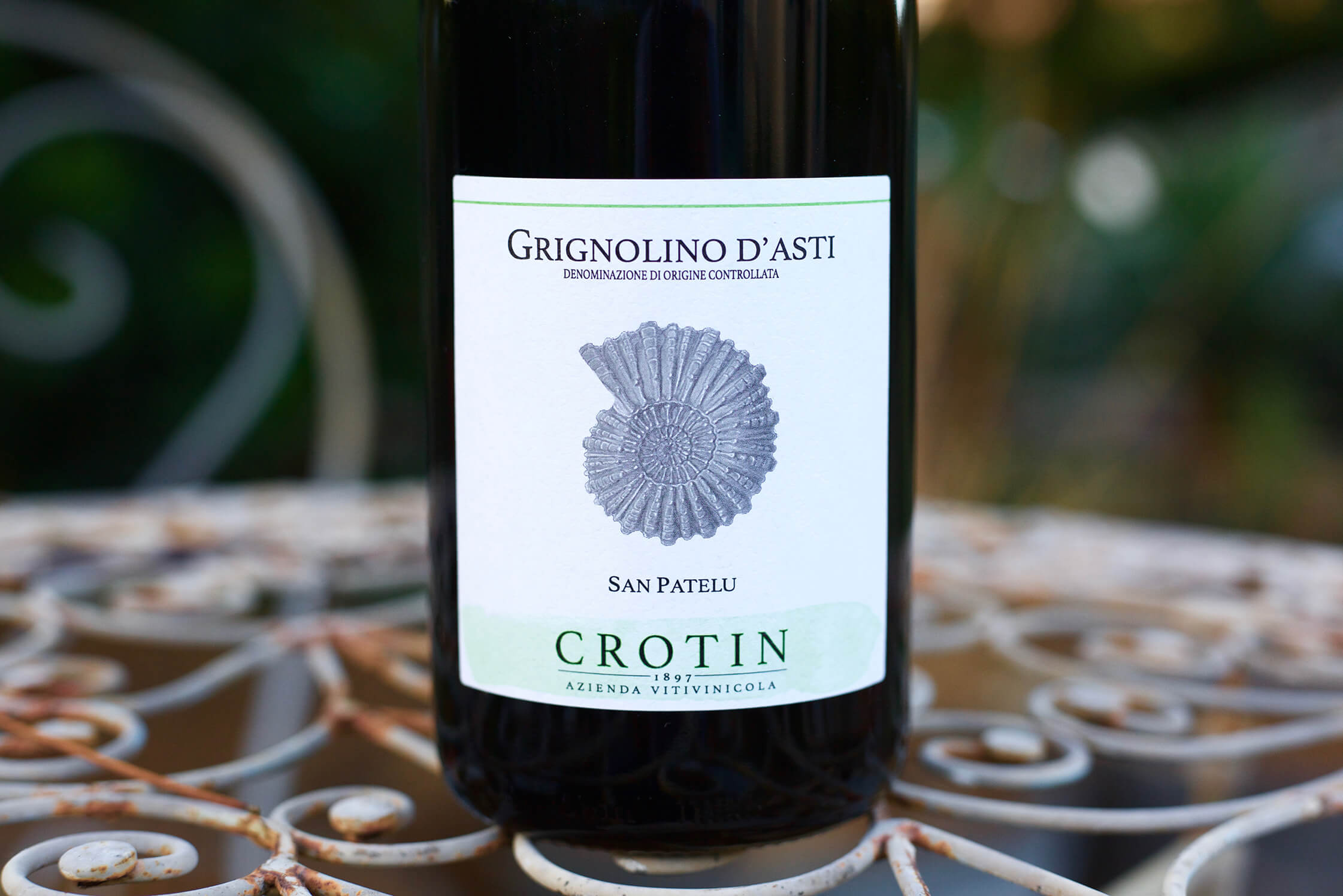
Crotin is most known for their Barbera d’Asti wine but these days a major uptick is Grignolino, a variety with bigtime aromatic pleasure and a fruity and round but tight mouthfeel laced with scents of Aperol and sun-dried red and orange flowers. Crotin’s Grignolino has become a big call item for our restaurants, and we buy all that we can from this cantina. Everything Crotin makes is priced exceptionally well, and their Grignolino offers profound value for those with a hankering for wines from this part of Italy.
Freisa, a nearly forgotten grape variety ubiquitous in Piemonte only three decades ago, is found today mostly in the region’s backwater areas. It lost its footing to the rise in popularity of Nebbiolo-based wines and hasn’t yet found enough Langhe cantinas to be its modern-day champion on a larger scale. However, there are still compelling examples to be found at cantinas like Brovia and Giuseppe Rinaldi. Perhaps with the ever-increasing demand for Barolo and Barbaresco, it won’t regain footing in the Langhe anytime soon. Nevertheless, it should be on anyone’s radar looking for more of the identifiable but difficult to describe Piemontese characteristics imprinted on all of its red wines. From year to year, Freisa can vary in its tannin levels and if not managed well it can be a beast, but at Crotin they’ve tamed it and it brings great pleasure with only a slight tilt toward more rusticity than their Grignolino.
There’s a new and perhaps polarizing wine in the Russo brothers’ range called Ruché, a grape variety I was unaware of until two years ago when I had my first one at their cellar. They made one for a well-known producer of this variety and after it permeated my nose with Piemontese potpourri aromas, I was sure there would be takers in today’s market filled with highly aromatic wines; in this style, Ruché seems like a shoo-in. The problem—one I realized after Federico Russo sent me a mixed box of some other producers from the area along with one they produced for another label prior to bottling their own—is that most of them are above 15% alcohol and hard to enjoy because they overindulge in strong, perfumy, caricature-like aromas that can be wonderful for some, but downright cloying for others. Their 2018 was delicious enough for us to give the 2020 vintage a whirl, their first vintage bottled under Crotin. At 13.5% alcohol, their 2020 is lovely and not at all overwrought, but rather subtle for a wine that can sometimes be suffocating. If you are in search of pleasure and fun in your Piemontese wine experience, Crotin’s Ruché should be on your list.
The first drone video I did (which was more of a practice effort) is a regional teaser for our new producers in Spain’s Rioja and Txakoli areas, a short piece of eye-candy that covers some interesting ground from earlier this year. It’s fascinating how different the landscape in Rioja is compared to Txakoli, which is barely a half hour drive away from the northern parts of the region. The shots were filmed within a day or two of each other, but the drastically different environments make them seem like they are hundreds of miles apart.
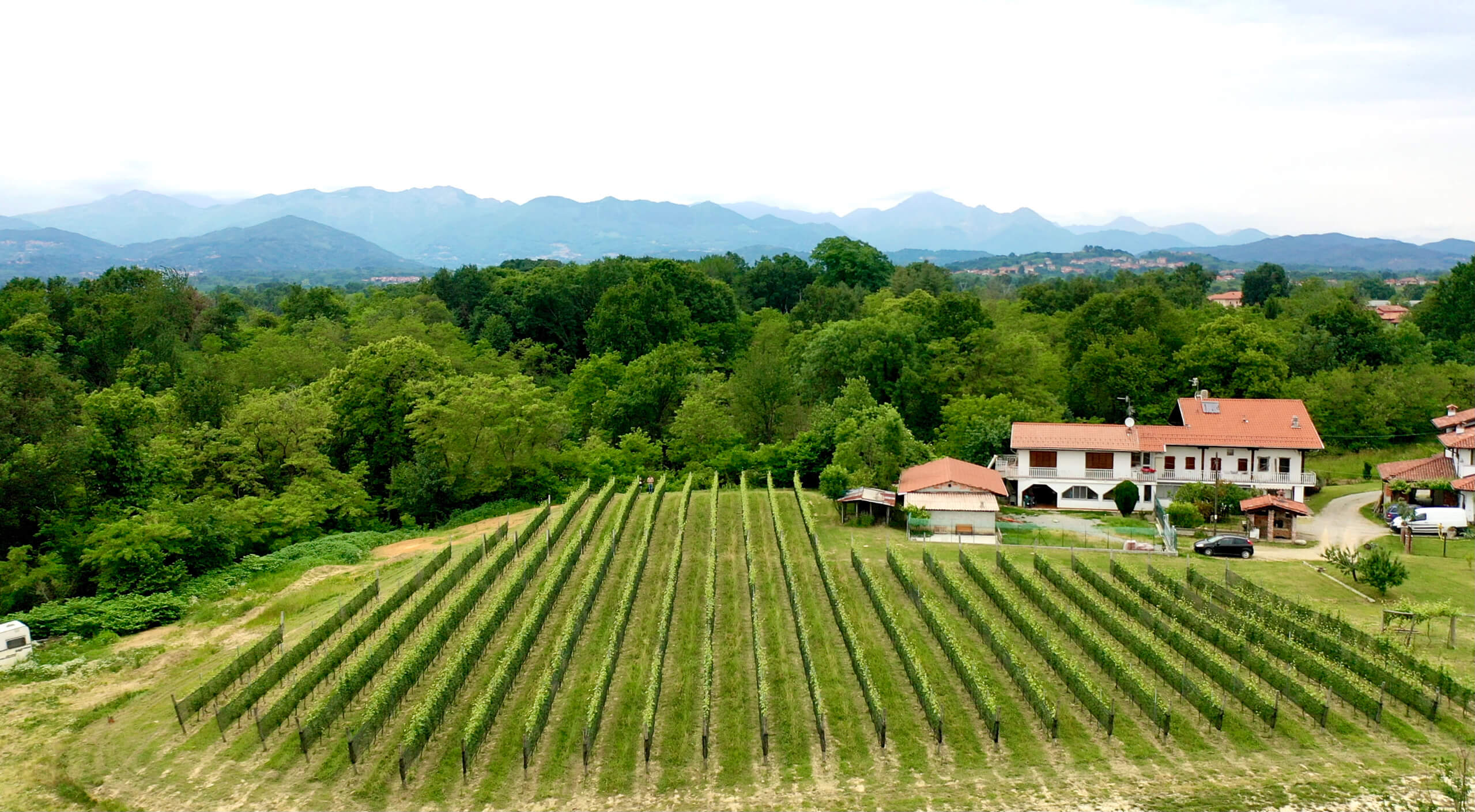
Going north into Alto Piemonte, the alpine foothills are home to Nebbiolo’s most historic roots. We’ve established a good foothold there with four winegrowers: Davide Carlone, Monti Perini, and two who have new arrivals in this container, Ioppa and Zambolin.
Fabio Zambolin has a garage-sized operation and only a few very small plots of land in and around the most historically celebrated region in Alto Piemonte, Lessona, and an appellation that covers a lot of peripheral territory near the most famous DOC appellations known as Costa della Sesia. He also has a bureaucratic challenge in that his winery is in the Costa della Sesia appellation but his vineyards are inside of Lessona’s borders; this makes his wine labeled as Costa della Sesia Nebbiolo “Vallelonga” ineligible for the Lessona DOC, despite its fruit being grown entirely within Lessona. (This is the cue for savvy buyers to look a little closer at this bargain-priced wine that drinks as well as many wines bottled under this appellation.) Fabio’s wines are a favorite among our wholesale staff so it’s often hard to keep them in stock, especially given that we are allocated fewer than a hundred cases of all of his wines for the entire US. The overall style is one of finesse over power, a combination of the sandy volcanic soils of Lessona and Fabio’s stylistic preferences. Vallelonga is made entirely from Nebbiolo with extremely serious trim and represents one of the top values in the region.
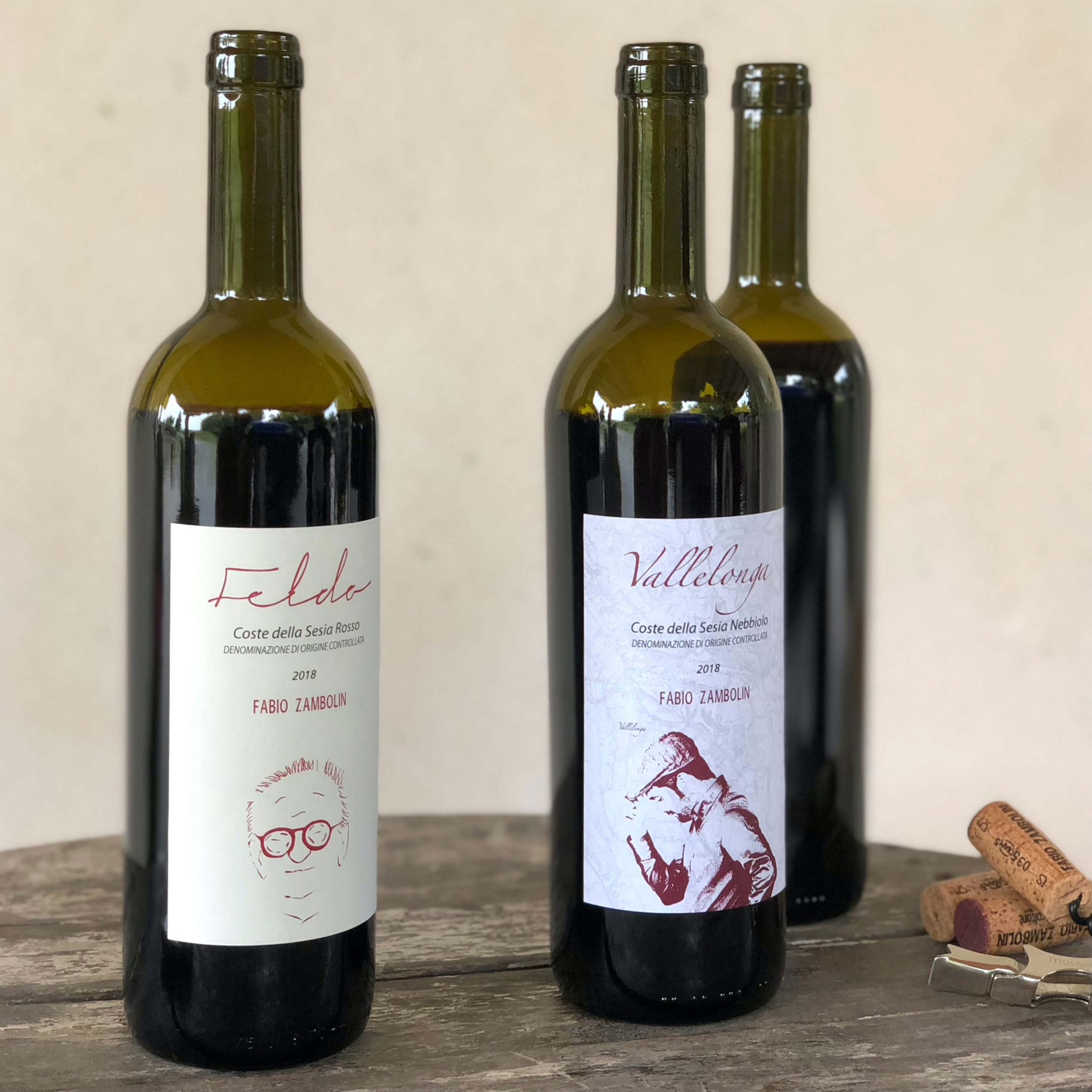
Zambolin’s Costa della Sesia “Feldo” is a field blend of old-vine Nebbiolo, Vespolina and Croatina, and it flies out of stock upon arrival. I never imagined that a blended Piemontese wine without a dominant grape variety would be one of our top sellers, but Feldo has proven me wrong with every delivery, and I don’t expect anything different this time. It has gobs of festive aromas and flavors (at least compared to other wines in an area known for often producing more solemn, strict wines in their youth), with not a single dash of pretension—it’s well-made Northern Italian glou glou. Rustic and playful flavors evoke those of an ancient Italian festive culture and are perfect for full-flavored food, like cured ham, braised meat, pasta, and pizza. There’s a lot of seriousness tucked in there too—no surprise considering the perfectionism with which Fabio organically farms his vineyards and his meticulous work in the cellar.
When I am able to finally unplug myself from the unusually high quantity of new producer profiles I need to write for our website, I will get to the left bank of Chablis, along with dozens of other videos I plan to create from the drone footage I shot on my two-month trek through Europe, which only really missed the Loire Valley and Central and Southern Italy.
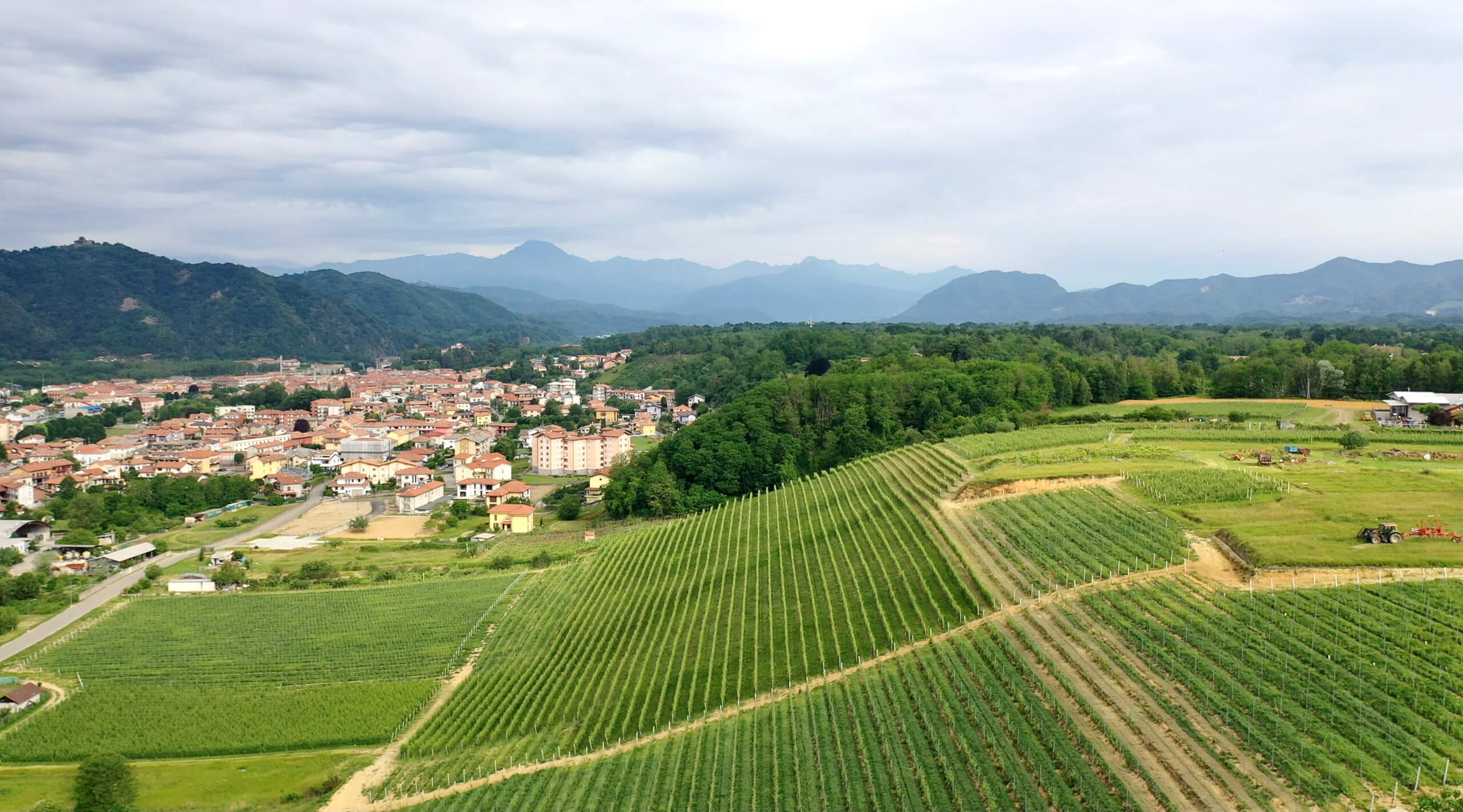
Since the first day we started to import Ioppa, the 2016 vintage of single-vineyard Ghemmes were greatly anticipated. 2016 marked the first year of their collaboration with Cristiano Garella, a Piemontese enologist with a knack for slight alterations in philosophy, cellar work and final blend decisions that can significantly improve a wine. Interestingly, I used to sell Ioppa’s wines back at the beginning of my import/distribution career in 2008 and 2009 when the wines were imported by a progressive Italian importer of the time, Matthew Fioretti, through his company, Summa Vitis. I visited the cantina in 2009 and I would’ve never guessed that almost a decade later I would be importing the wines myself. The first vintages we brought in from their crus, Balsina and Santa Fé, were 2012s, wines that were built to show their best at least a decade after their vintage date. Cristiano had a hand in finishing them and they and the 2013s are just now beginning to open up.
Ioppa turned a corner starting with the 2015s, moving away from a bigger, more tannic style that, when young, required food, to wines with more immediate accessibility that at the same time are still very ageable. The cantina also began conversion to organic farming around that time, which also seems to have softened the overall impression of their entire range. Ioppa’s 2015 Ghemme is simply wonderful, and six years after the vintage date the tannins are softening and this alpine Nebbiolo beauty is expressive immediately upon opening. The 2016 Ghemme DOC is the same overall quality as the 2015 that just arrived, but will come in next year. This Ghemme is composed of 85% Nebbiolo and 15% Vespolina and is aged for 48 months in 25-30hl Slavonian oak botte.
The single-cru 2016 Ghemmes, Santa Fé and Balsina, are stunning. I tasted them this summer at the cantina with Andrea Ioppa, the eldest of the family’s progressive generation of thirtysomethings, and Cristiano. The results between the two were simply stunning. With the proper time given after pulling the corks, they will greatly reward the patient drinker. And with even more patience for cellaring, there is no doubt that they will last decades, improving along the way.
The majority of the most important Alto Piemonte wine regions are set upon igneous rocks in geological origin (Bramaterra, Boca and Gattinara on the volcanic porphyry, and Lessona on volcanic sand), while Ghemme is mostly alluvium. However, not all alluvium is the same. Ghemme’s unusual bedrock mostly consists of incredibly friable granite cobbles brought in from the Alps by way of both glacier and river. These rocks, or what appear to be rock, can be crushed into sand with a gentle squeeze of your hand. This granite sand and completely decomposed bedrock is one of the keys that elevates Ioppa’s wines to higher tones. It’s more present in the topsoil of the Balsina vineyard which makes the more elegant of the two cru wines. Mostly composed of iron-rich clay topsoil, Santa Fé is more muscular and has deeper balsamic notes. But in the case of the Ioppa’s vineyards, no matter what lies on top, they all rest on granitic alluvium bedrock. If Santa Fé is brutish power and earth, Balsina is elegant power and plays slightly more in the ethereal realm. For the collectors and cellar builders, you might not want to take Balsina without Santa Fé. They are a match that shows greater strength together. Both of these Ghemme wines are composed of 85% Nebbiolo and 15% Vespolina, and are aged for 48 months in 25-30hl Slavonian oak botte.
Lastly, an unexpected thriller is Ioppa’s Vespolina “Mauletta”, which I tasted this summer along with the 2016 cru wines. It was the wine of the day for me among Ioppa’s power quartet of 2015 and 2016 Ghemme DOC wines, and 2016 Balsina and Santa Fé. However, it didn’t take the day because it was the best, it was simply the most stunning because I’ve never had a pure Vespolina wine of this caliber. Vespolina is a fabulous grape credited as contributing genetic parent material to the Nebbiolo. In recent years there’s been new focus on this ancient variety; much has been discovered about how to manage it in the cellar, and few have more experience vinifying it than their enologist, Cristiano Garella. Cristiano, Andrea and the other Ioppa boys, Luca and Marco, truly unlocked the key to this noble variety with their 2016 Mauletta. The answer for working around Vespolina’s often green tannins when the rest of the grape is phenolically ripe is simply to vinify it for a shorter time in the cellar separate from Nebbiolo instead of co-fermenting them together, followed by 48 months in botte to further sculpt it through a slow maturation. When Vespolina hits its balanced ripeness, its tannins are still green, so shorter fermentations may be preferred while extremely long ones often significantly reduce the impact of the wine’s primary fruit. Ioppa plays it in the middle with eighteen to twenty days on the skins and the 2016 Mauletta is a breakthrough performance and should not be missed by anyone interested in Piemontese wines.
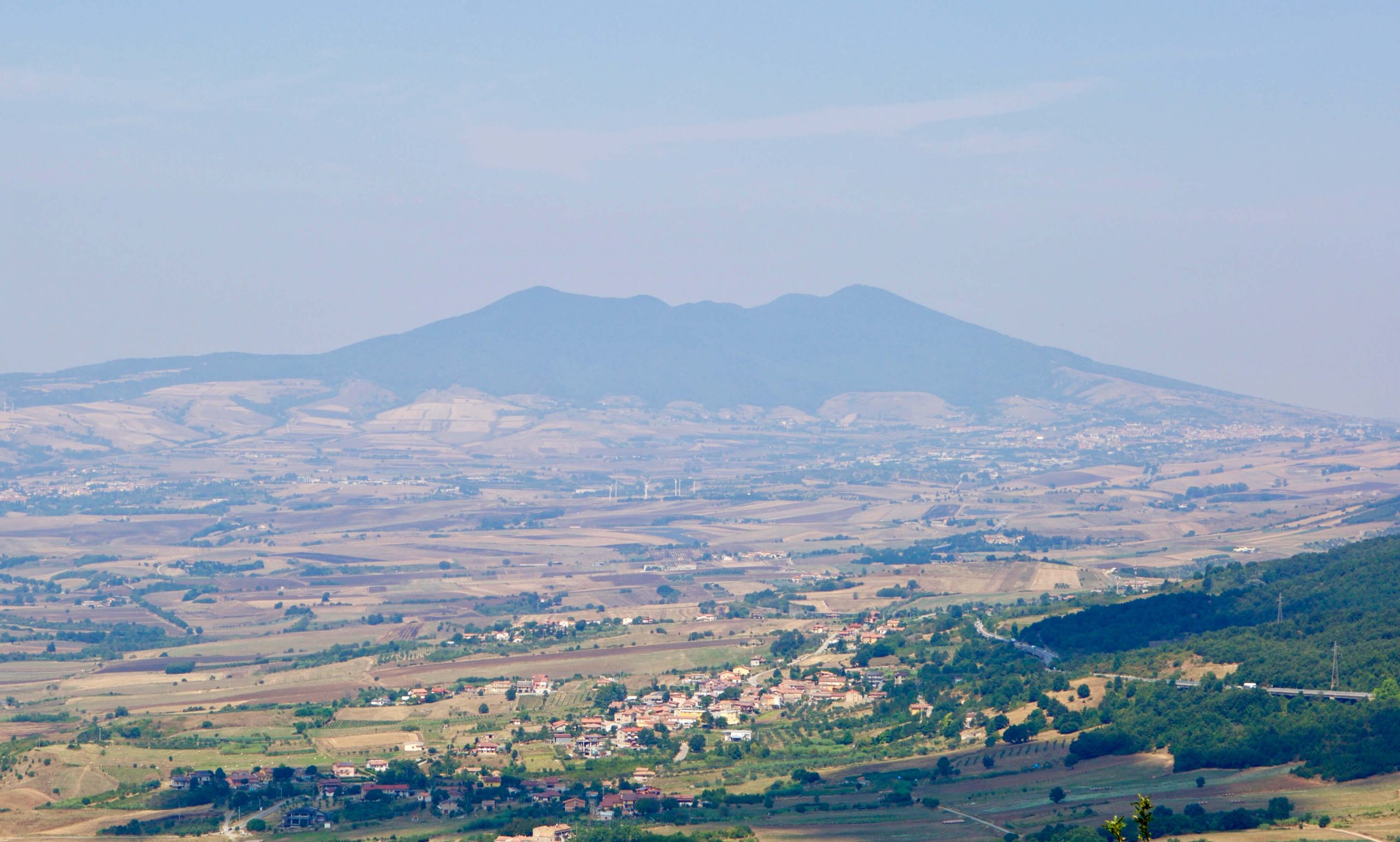
Madonna delle Grazie’s entry-level Basilicata Aglianico wines, Messer Oto and Liscone, are some of the most sought after in our portfolio for restaurant by-the-glass programs. Since the first wines were imported five years ago, they were immediately scooped up by the half-pallet by many of our top restaurants. The Latoracca family, with their extremely astute and well-educated sons, Paolo and Michele, in the cellar and in the vineyard with their father, Giuseppe, were relatively new wine producers that started bottling their own wines only fifteen years ago but have been growing grapes for generations. Initially, they simply couldn’t keep up with our demand—mostly because Immacolata (Irma), aka mamma, couldn’t hand label every bottle herself fast enough. These days, they’ve given Irma a break with a new labeling machine, and our ability to get stock on a larger scale is easier, despite the massive port delays. (Though these wines were supposed to arrive three months ago!)
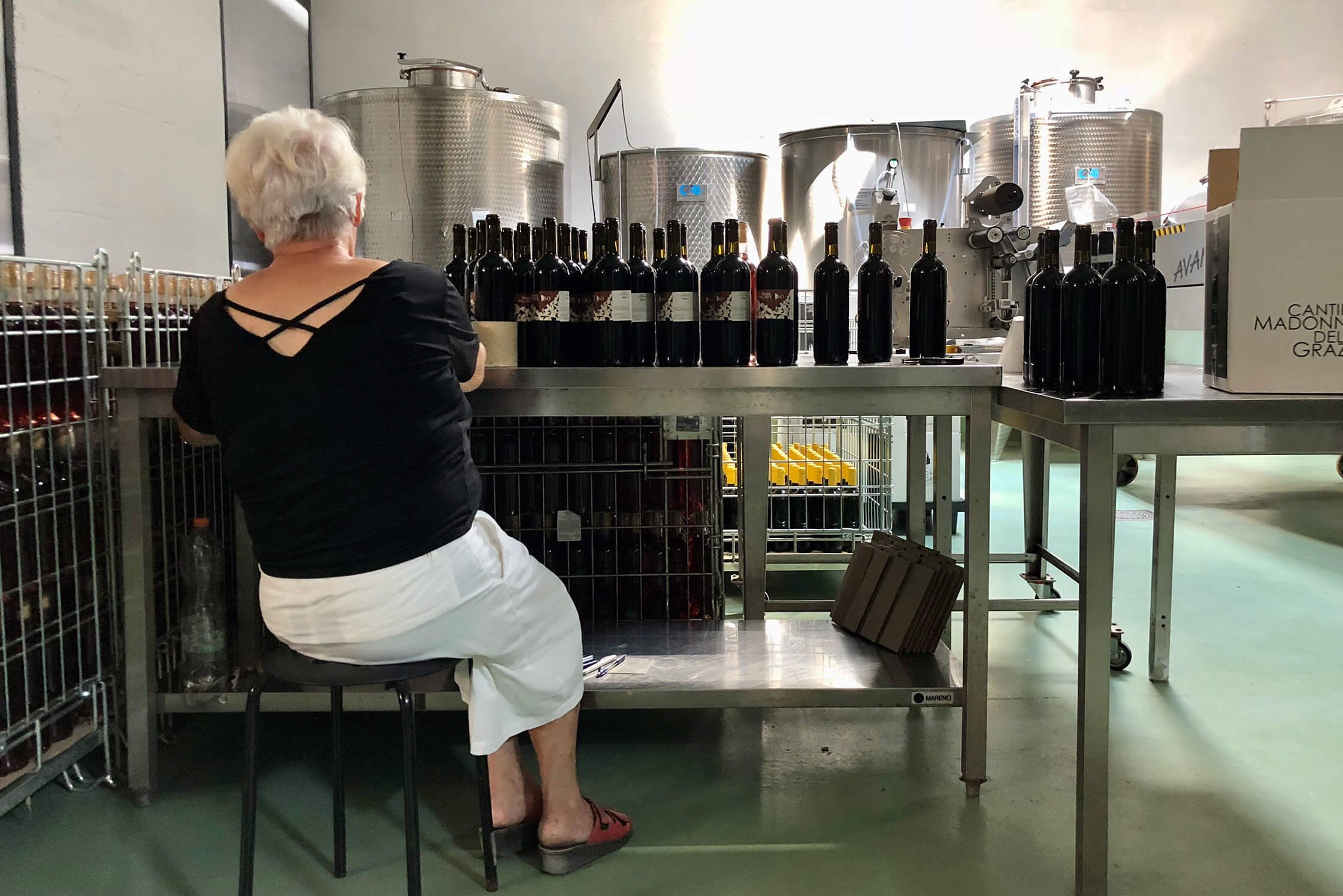
The two-hectare parcel of Aglianico that makes up the 2017 Messer Oto comes from the family’s youngest vineyards in Venosa’s Fiano di Camera district, inside the Aglianico del Vulture DOC in southeastern Italy. A location 420 meters above sea level on volcanic soils full of limestones bears this highly expressive and bright wine. The grapes are a massale selection of small berries with more polyphenols in the skin, which brings more color to this wine. These grapes are usually picked in the middle of October and are the first in for red wine production. Climatically it is the same as the other vineyards in their range, but the soils are better drained which results in earlier ripening than the Liscone, Bauccio and Drogone, all with richer volcanic clay soils. Raised in stainless steel, Messer Oto is a charmer and perhaps their most versatile wine, able to appeal to a broad range of wine lovers. The aging in steel preserves the wine’s aromas and freshness, revealing impressive levels of bright acidity, earthiness, and an ethereal nose filled with red and purple fruit.
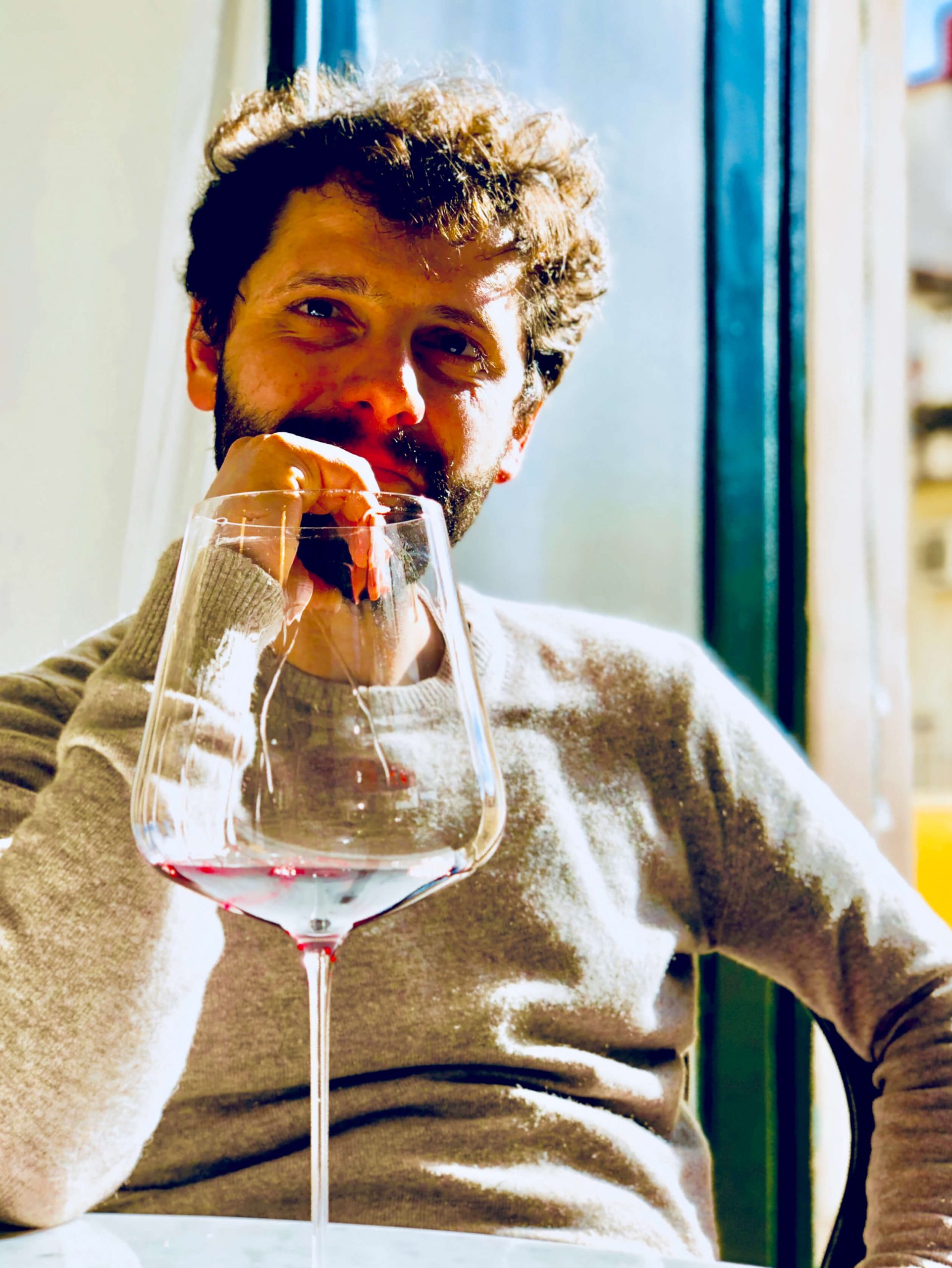
While Madonna delle Grazie’s Agliancio del Vulture 2016 Liscone is the second Agliancio in the cantina’s range of reds, it can easily rival many cantinas’ top wines. It’s very serious wine with equal charm and punches so far above its weight class it seems silly for the price. (I’ve told as much to the Latoracca family, followed by tongue-in-cheek threats to dissuade them from increasing it!) Liscone is made from thirty-plus-year-old vines that sit at 430 meters. Three kilometers away from Messer Oto, it’s harvested a week later at the end of October because its soil is richer in volcanic rock-derived clay, not because the temperature is dramatically different. The plants are ancient biotypes different from Messer Oto and have larger berries and clusters because of the great water retention of its clay soil. The average yield here is 50-55hl/ha (70-80 quintale; ~2.8tons/acre).
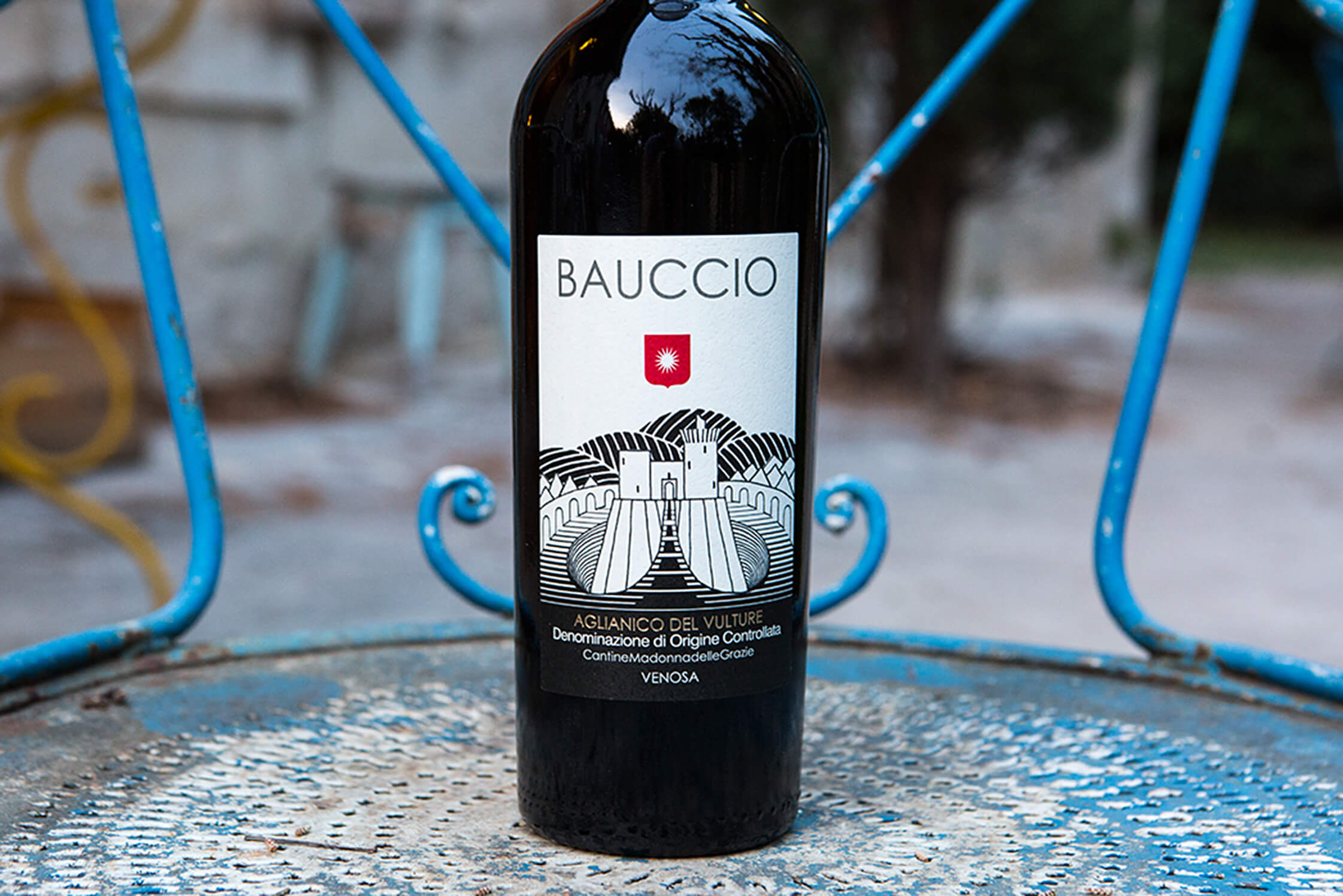
Grown in a sub-parcel of the Liscone vineyard, the grapes for 2015 Bauccio are grown entirely on black volcanic clay with a soft volcanic tuff layer about 60-70cm below the surface. Tuff is a combination of sand compacted with pyroclastic material, and each volcanic region and subzone has its own combination of minerals and bedrock structure. In contrast to sections used for their Liscone bottling, the topsoil here has little to no tuff in its black volcanic clay topsoil. Despite growing beside all the vines for Liscone, it takes a week or so longer to ripen due to the topsoil depth and the temperature influence of the nearby creek. A perfect marriage of volcanic and Aglianico flavors, Bauccio will age effortlessly for decades while maintaining very good accessibility in its youth. The grapes are picked at the end of October and if the ripeness is not there, its grapes are blended into Liscone, which has a shorter fermentation that doesn’t extract hard tannins. Bauccio is a noble wine with a fine balance of Aglianico power and elegance with both dark and bright fruit and savory characteristics. Every wine in every price level from Madonna della Grazie presents as good a value as can be found the world over, and Bauccio in a mid-range price is no exception.
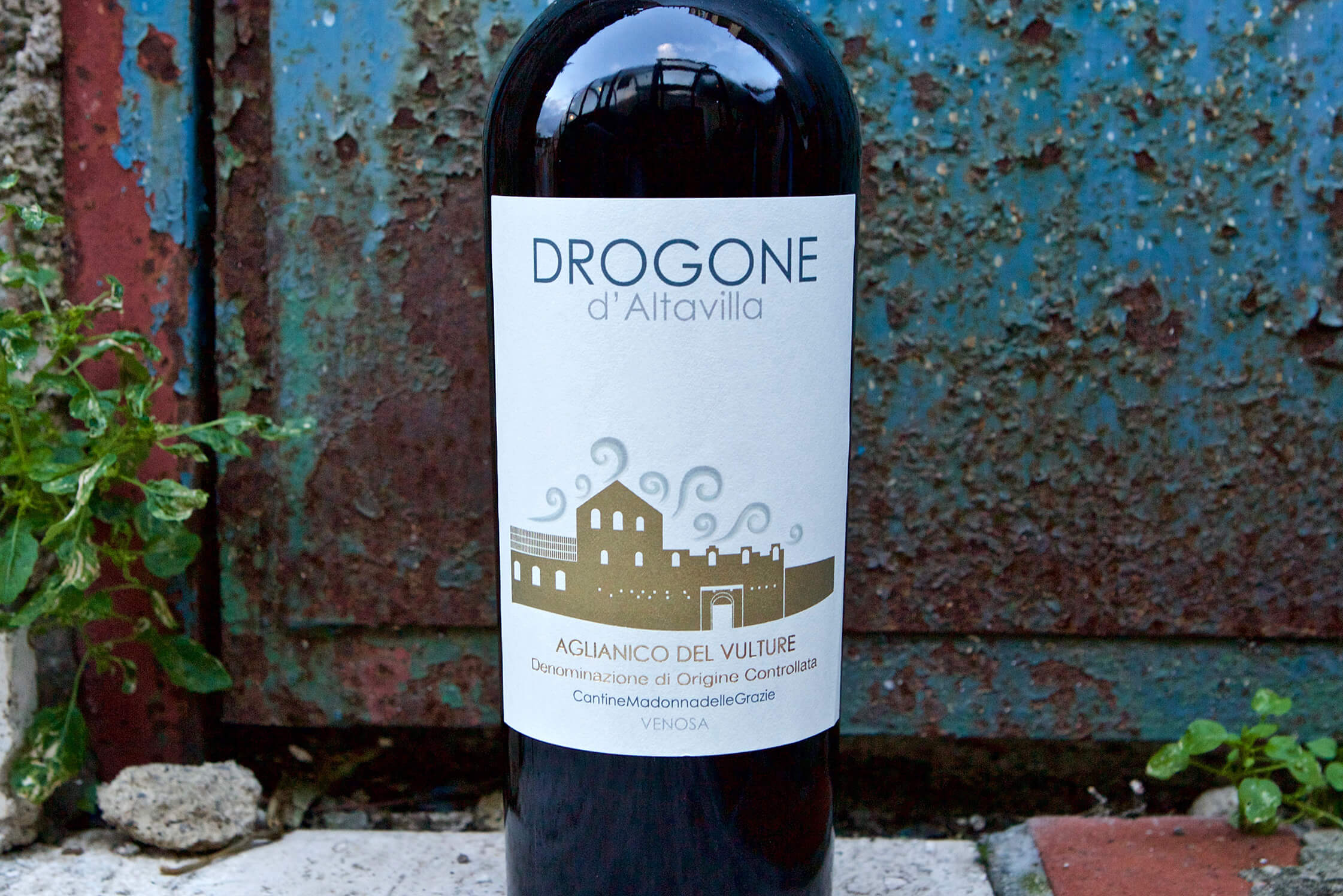
From a classically styled wine standpoint, Madonna delle Grazie’s 2013 Drogone d’Altavilla takes its place at the top with the best of all we have to offer in our portfolio. The 2013 checks the boxes of a great wine: impeccable balance, powerful yet refined, both gritty and suave, a deep well with elevated lift, and enjoyable young but destined to grow old with grace and polished nuance. It’s made only in the best years when the Liscone vineyard’s oldest vines find optimal ripeness. Usually it’s blended into Bauccio or Liscone on other years, and the only vintages bottled thus far have been 2003, ‘04, ’07, ’09, ’13, and ’15.
What makes Drogone special is a combination of vine age (planted around 1960) and its genetic makeup. It’s a unique massal selection of Aglianico with a more compact cluster and more red than black tinted grapes. The deciding factor each year if Drogone is bottled is whether this extremely late-ripening ancient cultivar achieves the extra phenolic maturity to properly ripen the seeds to withstand its 40-45 days of fermentation without the tannins overwhelming the wine. For this length of time, the Latoracca’s need the seeds to be perfectly ripe, or the tannins may be slightly too coarse for what they expect out of a wine that will take the top spot in their range over Bauccio. Paolo, the winemaker of the family, explained that it has little to do with the concept of whether it is a “great” vintage or not, but only if the seeds can reach maturity in that last week on the vine, which is usually harvested the first week of November. Drogone is made the same in the cellar as Bauccio, except for the additional time of the post-fermentation maceration on the skins.
Drogone remains one of the great wines in our portfolio. It’s a big win for me on authenticity and emotional value and transports me straight back to the Basilicata into the view of Monte Vulture, the extinct volcano that gave dramatic birth to this rich land with its black and beige volcanic soils, and the Latoracca’s bountiful vineyards. Drogone tastes, smells, and feels like this ancient land whose vinous history is as old as any in Europe, all with the added touch of the heart-warming spirit and generosity of the Latoracca family.
During this unique moment in history, we greatly expanded into Iberia and picked up a few other producers in Italy, France and Germany along the way. Many of our new producers are not even close to arriving and I wanted to play them close to my chest until they got to the States because I’ve had bad experiences where people changed their minds and pulled out after we had already started to promote them. But given that this month all our new arrivals were already covered over the last two monthly newsletters, it’s a good opportunity to talk about some great new things in the market, and what’s more exciting than that?
